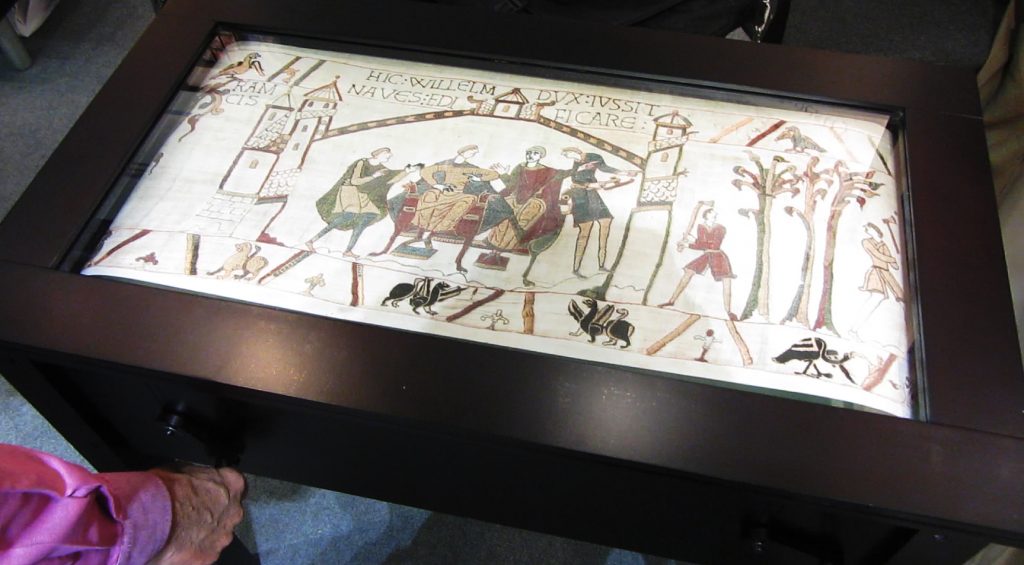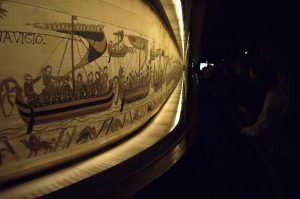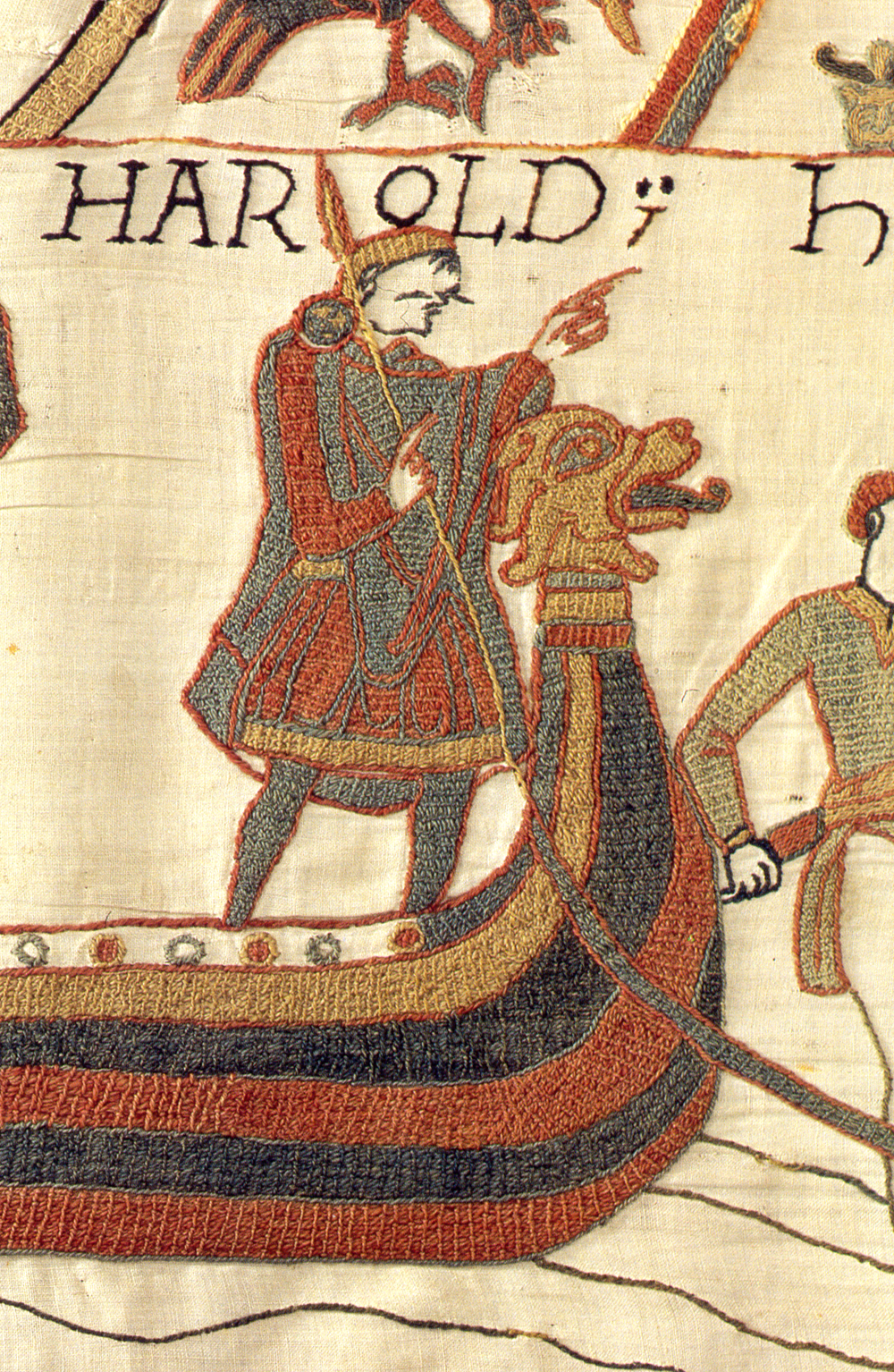As you lovely readers may have heard, the Bayeux Tapestry facsimile production is over, finally. Here is a few things you should know about the original and its facsimile!
I should start by saying that the Bayeux Tapestry is simply a one-of-a-kind artifact. Also known as Tapisserie de Bayeux, the Bayeux Tapestry is a beautiful example of skillfully embroidered cloth preserved in the town of Bayeux, Normandy, France. The tapestry takes its name after the French town, however, it was probably produced in England, sometime around the 1070s.
Technically speaking, the definition of tapestry refers to a cloth in which the design is woven in. For this reason, the Bayeux Tapestry should rather be referred to as embroidery, however, despite the technical definition, this piece of art has become famously known to the general public as tapestry.
As it depicts the events leading up to the battle of Hastings and the norman conquest of England on behalf of William, Duke of Normandy, its creation’s terminus post quem should be the 1060s. The cloth, with its 70 meters in length and 50 cm in height, represents a supreme example of Norman Romanesque art.

The tapestry tells the events that took place between 1064-1066, ending with the battle of Hastings. The two main protagonists are Harold Godwinson, King of England and William, Duke of Normandy, also known as William the Conqueror.

King Harold, the last Anglo-Saxon king of England, was killed in the battle of Hastings on 14th October 1066. The English defeat ultimately endorsed the making of a new foreigner ruler, King William of Normandy, the first Norman King of England.
The earliest written reference to the tapestry is a 1476 inventory of Bayeux Cathedral, at least four centuries after its production. The identity of the commissioner has been subject to a lot of speculation and the scholars have come to agree on the figure of bishop Odo, William’s half brother, although according to a French legend the tapestry was commissioned by Queen Matilda, William’s wife.
The tapestry was probably commissioned by the Normans rather than the English, as it mainly depicts a Norman point of view. Although historical accuracy may have been distorted at times, in general this piece of art provides a view of the life people lived at that time, with their every-day tools, weapons, apparel, and other objects.

Moving on to its facsimile edition, as you may already know, the Bayeux Tapestry has been produced by The Folio Society and each copy comes in its own scroll box, provided with handles to be manually operated in order to go through the story that the tapestry tells. The publisher has provided a very limited edition due to the painstaking and long process involved in its creation, and the result is simply beautiful.
Instead of reading about the Battle of Hasting and the Norman Conquest, you will be able to watch it as the 50 overlapping scenes tell the story of the events that led to the making of the first Norman King of England.
So if you ever feel like you need a good old tale of conquerors aspiring to be king, make sure to get your own copy, you will not regret it!

